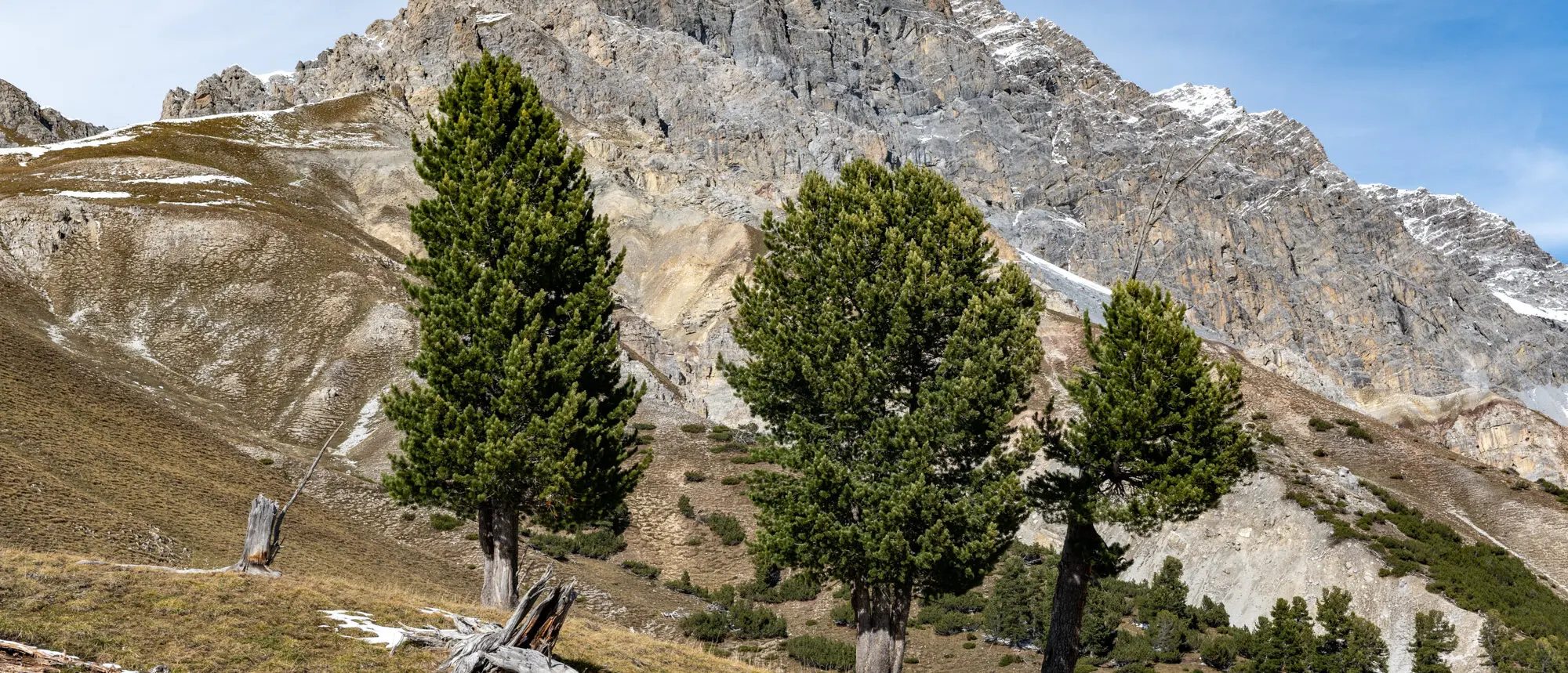Also known as Swiss stone pine or Arolla pine, the cembra pine is a five-needled pine and favours shady locations.
Together with the larch, the cembra pine is often found as far up as the tree line. Seeds are produced only every 6 – 10 years. In winter, the cembra pine can withstand temperatures as low as –40°C! Its long, soft needles grow in clusters of 5.
 About once in 10 years, a large number of cembra pines simultaneously produce large, heavy cones that smell strongly of resin. In other years, single small cones are also produced. Cembra pines are assisted in the dispersal of their seeds by the nutcracker, who buries nuts for its food reserves.
About once in 10 years, a large number of cembra pines simultaneously produce large, heavy cones that smell strongly of resin. In other years, single small cones are also produced. Cembra pines are assisted in the dispersal of their seeds by the nutcracker, who buries nuts for its food reserves.
In order to germinate, the cembra pine requires soil rich in humus. The cembra pine nuts hidden by the nutcracker find ideal germination conditions at a depth of 3 to 5cm in the soil.
Many cembra pines have been around for up to 1000 years, and could tell many a tale of adverse weather conditions, lightning and permafrost. Have you ever smelled the wonderful aroma of the cembra pine? Almost every restaurant in the Engadine has an “Engadinerstube” with cembra pine-clad walls and furniture.
Many cembra pines like this one on the edge of the tree line, lead a constant battle against the elements. A number of trees bear the traces of this harsh existence.
Further information: Alpine mixed forests



